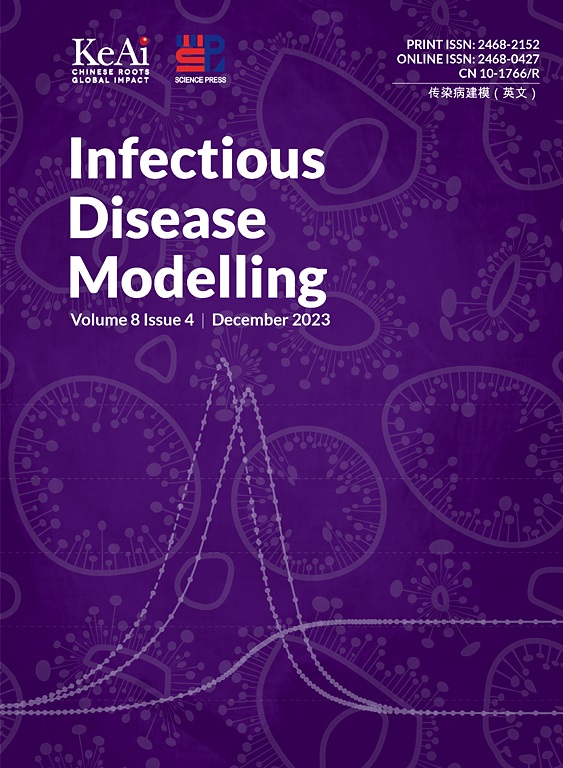Network-based virus dynamic simulation: Evaluating the fomite disinfection effectiveness on SARS-CoV-2 transmission in indoor environment
IF 2.5
3区 医学
Q1 Medicine
引用次数: 0
Abstract
Severe acute respiratory syndrome coronavirus 2 (SARS-CoV-2) is involved in aerosol particles and droplets excreted from a coronavirus disease 2019 (COVID-19) patient. Such aerosol particles or droplets including infectious virions can be attached on fomite, so fomite is not a negligible route for SARS-CoV-2 transmission within a community, especially in indoor environment. This necessarily evokes a need of fomite disinfection to remove virions, but the extent to which fomite disinfection breaks off virus transmission chain in indoor environment is still elusive. In this study, we evaluated the fomite disinfection effectiveness on COVID-19 case number using network analysis that reproduced the reported indoor outbreaks. In the established network, virus can move around not only human but also air and fomite while growing in human and decaying in air and on fomite, and infection success was determined based on the exposed virus amount and the equation of probability of infection. The simulation results have demonstrated that infectious virions on fomite should be kept less than a hundred to sufficiently reduce COVID-19 case, and every-hour disinfection was required to avoid stochastic increase in the infection case. This study gives us a practical disinfection manner for fomite to control SARS-CoV-2 transmission in indoor environment.
基于网络的病毒动态模拟:评估室内环境中飞沫消毒对 SARS-CoV-2 传播的有效性
严重急性呼吸系统综合征冠状病毒 2(SARS-CoV-2)与 2019 年冠状病毒病(COVID-19)患者排出的气溶胶颗粒和飞沫有关。这些气溶胶粒子或飞沫包括传染性病毒,可以附着在飞沫上,因此飞沫是社区内,尤其是室内环境中传播 SARS-CoV-2 的一个不可忽视的途径。这就必然要求对吸附物进行消毒以清除病毒,但吸附物消毒能在多大程度上切断病毒在室内环境中的传播链仍是一个未知数。在本研究中,我们利用网络分析再现了已报道的室内疫情,评估了对 COVID-19 病例数的烟灶消毒效果。在已建立的网络中,病毒不仅可以在人体内移动,还可以在空气和酵母中移动,同时在人体内生长,并在空气和酵母中腐烂。模拟结果表明,要充分减少 COVID-19 病例,应将 fomite 上的传染性病毒数量控制在 100 个以下,并且需要每小时消毒一次,以避免感染病例的随机增加。这项研究为控制 SARS-CoV-2 在室内环境中的传播提供了一种实用的烟具消毒方式。
本文章由计算机程序翻译,如有差异,请以英文原文为准。
求助全文
约1分钟内获得全文
求助全文
来源期刊

Infectious Disease Modelling
Mathematics-Applied Mathematics
CiteScore
17.00
自引率
3.40%
发文量
73
审稿时长
17 weeks
期刊介绍:
Infectious Disease Modelling is an open access journal that undergoes peer-review. Its main objective is to facilitate research that combines mathematical modelling, retrieval and analysis of infection disease data, and public health decision support. The journal actively encourages original research that improves this interface, as well as review articles that highlight innovative methodologies relevant to data collection, informatics, and policy making in the field of public health.
 求助内容:
求助内容: 应助结果提醒方式:
应助结果提醒方式:


